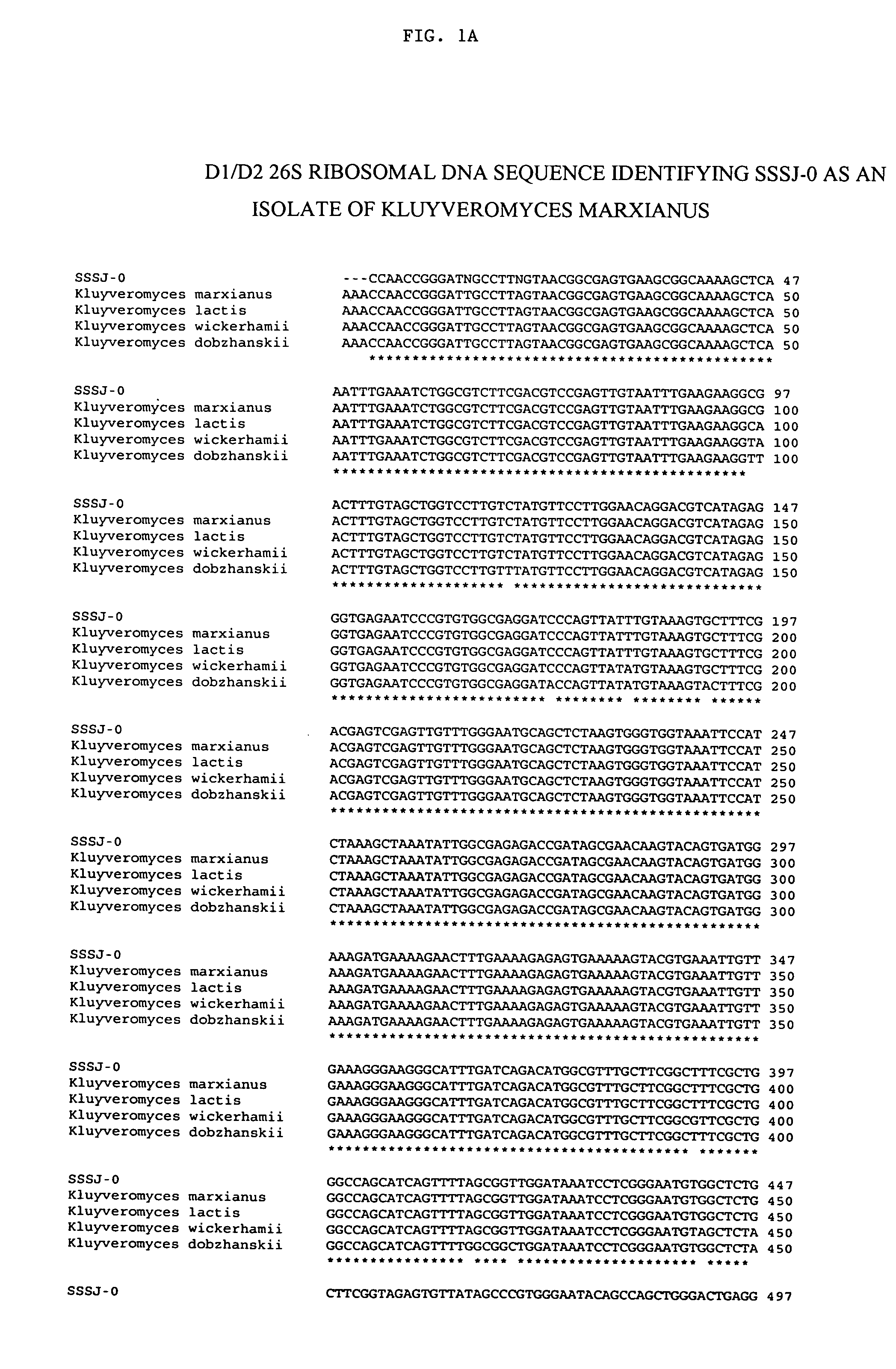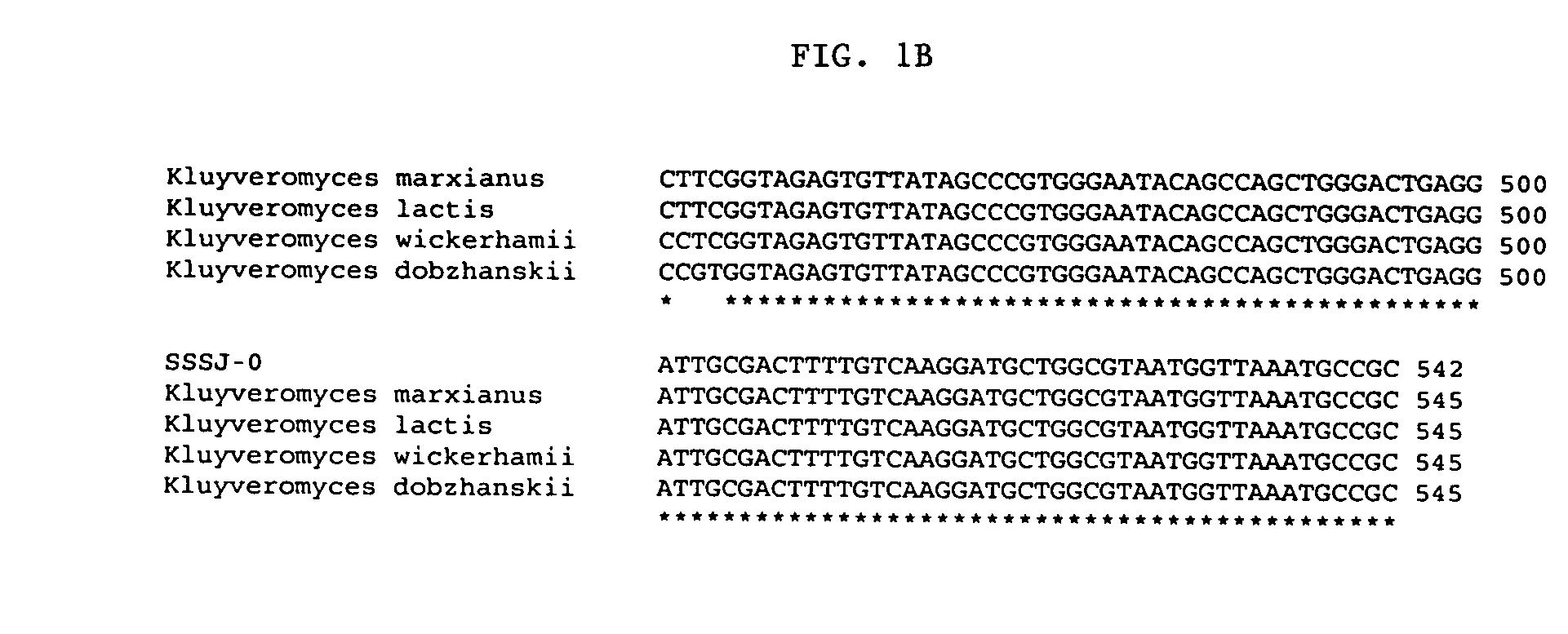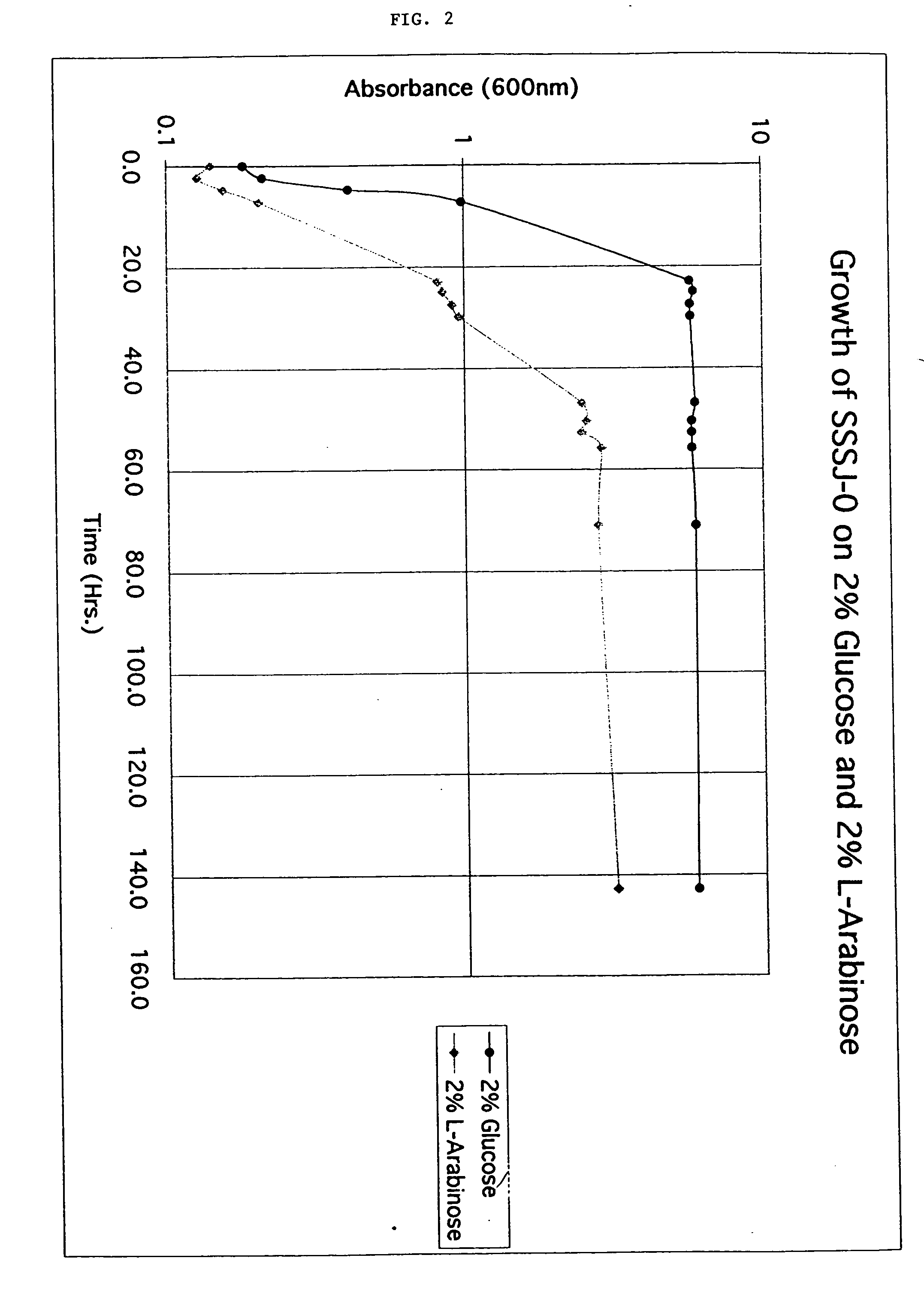Kluyveromyces strains metabolizing cellulosic and hemicellulosic materials
a technology of hemicellulosic materials and cellulose, which is applied in the field of microorganisms for the generation of ethanol, can solve the problems of difficult conversion of pentose- and hexose-containing cellulose or hemicellulose to ethanol by yeasts, complex and heterogeneous polymers, and cellulosic biomass
- Summary
- Abstract
- Description
- Claims
- Application Information
AI Technical Summary
Benefits of technology
Problems solved by technology
Method used
Image
Examples
example 1
Isolation of Strain SSSJ-0 by Enrichment Culture from Recycled Paper Sludge
[0088] Recycled paper sludge was obtained from the Smurfit-Stone Container Corporation, Santa Clara, Calif. A sample of the sludge (0.4 g) was inoculated into an enrichment culture medium composed of 50 mM citrate buffer, pH 4.5, 20 per cent glucose, 2 per cent peptone, and 1 per cent yeast extract. The culture was maintained at 45° C. in a shaking water bath (100 rpm) for 18 hours. An aliquot of the enrichment culture was then spread onto plates of YPD, a medium composed of 1 per cent yeast extract, 2 per cent peptone, 2 per cent glucose, and 2 per cent agar. The plates were cultured at 43° C. for 18 hours, by which time single colonies of yeast appeared. A single yeast colony was picked and propagated on YPD plates as strain SSSJ-0.
example 2
Identification of Strain SSSJ-0 as a Variant of Kluyveromyces marxianus
[0089] The yeast strain recovered by the enrichment method was identified by sequencing the D1 / D2 region of the 18S ribosomal DNA (Kurtzman & Robnett, Antonie van Leeuwenhoek 73:331-371 (1998)). Genomic DNA was extracted from a ˜1 mm2 colony of the sample using a chelex resin (Walsh et al., Biotechniques 10:506-513 (1991)). The D1I / D2 region of the 18S ribosomal DNA was amplified by the polymerase chain reaction (PCR) using the primers NL-1(5′-GCATATCAATAAGCGGAGGAAAAG) and NL-4 (5′-GGTCCGTGTTTCAAGACGG). The PCR was performed with Taq DNA polymerase (Promega), using the conditions recommended by the manufacturer, in a PTC-200 thermal cycler (MJ Research). PCR products were visualized on a 1% agarose (SeaKem) gel and cleaned using a PCR purification kit from Qiagen. Cleaned PCR products were sent for automated DNA sequencing at Davis Sequencing LLC. The amplification products had the sequence shown in SEQ ID NO: 1...
example 3
Growth of strain SSSJ-0 on Plant Saccharides
[0090] Seed cultures of SSSJ-0 were grown at 43° C. in a liquid medium composed of 20 g / L glucose, 0.67 g / L yeast nitrogen base, and 0.25 mM magnesium sulfate in a 50 mM citrate buffer, pH 4.5. Mid-log aliquots of the seed culture were inoculated (1:50) into test media of identical composition but containing 20 g / L of the carbon source instead of glucose. The amount of carbon source in the recycled paper sludge was estimated by determining the cellulose content of a dried sample. The cultures were maintained at 43° C. in shaking water baths (100 rpm). The increase in cell number was determined by measuring the OD600 of the cultures, or, in the case of the insoluble cellulosics, by plating aliquots of the culture on YPD plates and scoring the number of colonies developed. The doubling time of SSSJ-0 was determined by plotting the number of cells as a function of time in culture.
Carbon SourceDoubling Time (hours)Glucose4.0Arabinose4.5Xylo...
PUM
| Property | Measurement | Unit |
|---|---|---|
| temperature | aaaaa | aaaaa |
| temperature | aaaaa | aaaaa |
| molecular mass | aaaaa | aaaaa |
Abstract
Description
Claims
Application Information
 Login to View More
Login to View More - R&D
- Intellectual Property
- Life Sciences
- Materials
- Tech Scout
- Unparalleled Data Quality
- Higher Quality Content
- 60% Fewer Hallucinations
Browse by: Latest US Patents, China's latest patents, Technical Efficacy Thesaurus, Application Domain, Technology Topic, Popular Technical Reports.
© 2025 PatSnap. All rights reserved.Legal|Privacy policy|Modern Slavery Act Transparency Statement|Sitemap|About US| Contact US: help@patsnap.com



